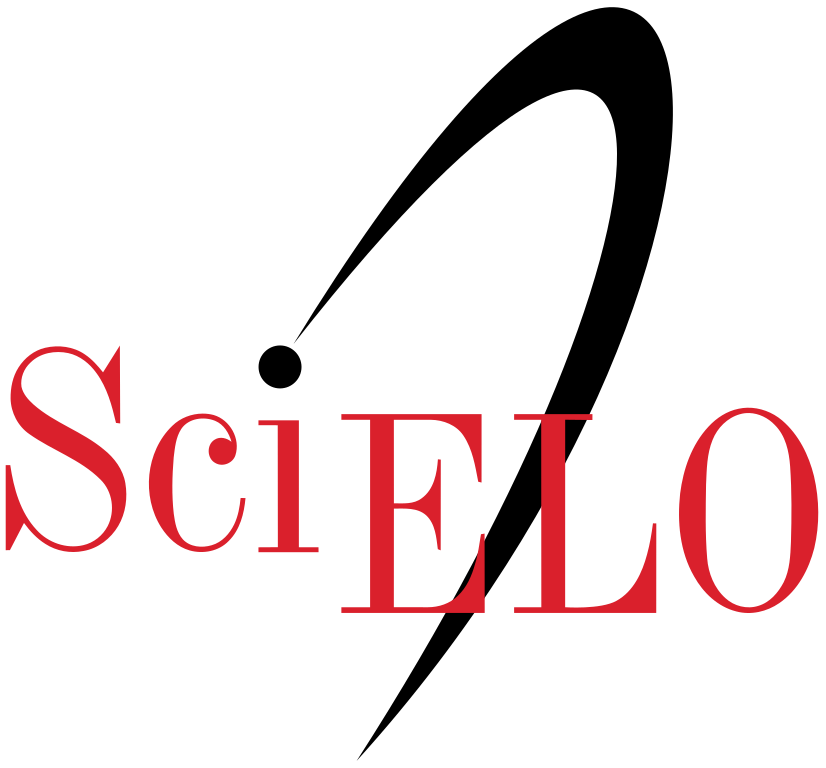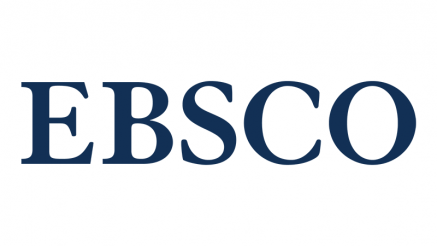Valorización hidrometalúrgica de pilas Ni-Cd gastadas utilizando ácidos orgánicos como agentes lixiviantes selectivos
DOI:
https://doi.org/10.14482/inde.41.02.547.256Palabras clave:
ácidos orgánicos, hidrometalurgia, pilas gastadas Ni-Cd, valorizaciónResumen
Se propone una ruta de procesamiento hidrometalúrgico de pilas Ni-Cd gastadas utilizando ácidos orgánicos como principales agentes lixiviantes. Los electrodos de tales pilas fueron lixiviados utilizando diferentes ácidos y mezclas de ellos, con la finalidad de encontrar la mejor combinación de variables operativas para una recuperación eficiente de metales valiosos; los productos obtenidos fueron caracterizados empleando microscopía electrónica de barrido, análisis químico por espectroscopia de absorción atómica, difracción de rayos x y espectroscopia infrarroja por transformada de Fourier. Se encontró que es posible obtener productos aprovechables en varias industrias aplicando dos etapas de lixiviación selectiva: en la primera, se emplea ácido cítrico al 15% m/m para recuperar 85±5% en peso de cadmio como sal; en la segunda, se emplea ácido acético al 5% m/m mezclado con ácido sulfúrico al 3% m/m, con el fin de recuperar el 50±3% en peso níquel en un producto formado por hidróxidos y sales. El sólido remanente de la segunda etapa de lixiviación también puede ser aprovechable, pues contiene 96±4% en peso de níquel.
Citas
D. C. R. Espinosa and M. B. Mansur, “Chapter 14 - Recycling batteries,” in Woodhead Publishing Series in Electronic and Optical Materials, V. Goodship, A. Stevels, and J. B. T.-W. E. and E. E. (WEEE) H. (Second E. Huisman, Eds. Woodhead Publishing, 2019, pp. 371–391.
D. C. R. Espinosa and J. A. S. Tenório, “Fundamental aspects of recycling of nickel–cadmium batteries through vacuum distillation,” J. Power Sources, vol. 135, no. 1, pp. 320–326, 2004, doi: https://doi.org/10.1016/j.jpowsour.2004.03.082.
M. Assefi, S. Maroufi, Y. Yamauchi, and V. Sahajwalla, “Pyrometallurgical recycling of Li-ion, Ni–Cd and Ni–MH batteries: A minireview,” Curr. Opin. Green Sustain. Chem., vol. 24, pp. 26–31, 2020, doi: https://doi.org/10.1016/j.cogsc.2020.01.005.
J. Wang, Y. Zhang, L. Yu, K. Cui, T. Fu, and H. Mao, “Effective separation and recovery of valuable metals from waste Ni-based batteries: A comprehensive review,” Chem. Eng. J., vol. 439, p. 135767, 2022, doi: https://doi.org/10.1016/j.cej.2022.135767.
C. Nogueira, F. Margarido, "Battery Recycling by Hydrometallurgy: Evaluation of Simultaneous Treatment of Several Cell Systems," Energy Technology 2012: Carbon Dioxide Management and Other Technologies, M. Salazar-Villalpando et al., Eds., The Minerals, Metals, & Materials Society, pp. 227-234, 2012.
L. Pietrelli, B. Bellomo, D. Fontana and M. Montereali, "Characterization and leaching of NiCd and NiMH spent batteries for the recovery of metals," Waste Manage., vol. 25, no. 2, pp. 221-226, 2005. doi: 10.1016/j.wasman.2004.12.013
A. Bernardes, D. Espinosa and J. Tenorio, "Recycling of batteries: a review of current processes and technologies," J. Power Sources, vol. 130, pp. 291-298, 2004. doi: 10.1016/j.jpowsour.2003.12.026
S. Frohlich and D. Sewing, "The BATENUS process for recycling mixed battery waste," J. Power Sources, vol. 57, no. 1, pp. 27-30, 1995. doi: 10.1016/0378-7753(95)02234-1
Zhang and Z. Xu, “A critical review of material flow, recycling technologies, challenges and future strategy for scattered metals from minerals to wastes,” J. Cleaner Prod., vol. 202. Elsevier Ltd, pp. 1001–1025, Nov. 20, 2018. doi: 10.1016/j.jclepro.2018.08.073.
L. Zhao, N. Zhu and X. Wang, "Comparison of bio-dissolution of spent Ni–Cd batteries by sewage sludge using ferrous ions and elemental sulfur as substrate," Chemosphere, vol. 70, pp. 974–981, 2008. doi: 10.1016/j.chemosphere.2007.08.011
N. Zhu, L. Zhang, C. Li and C. Cai, "Recycling of spent nickel–cadmium batteries based on bioleaching process," Waste Manage., vol. 23, pp. 703–708, 2003. doi: 10.1016/S0956-053X(03)00068-0
A. Zambrano Colmenares, J. Diaz Salaverría and P. Delvasto, “Characterization of the chemical compounds obtained after using acetic acid as leaching agent in the hydrometallurgical treatment of spent Ni-MH batteries,” Producción + Limpia, vol. 13, no. 1, pp. 19–29, Jan. 2018, doi: 10.22507/pml.v13n1a2.
A. Moccia Paradisi, C. Romero, R. Orta Rodríguez and P. Delvasto, "Caracterización fisicoquímica de los materiales activos presentes en pilas gastadas del tipo Ni-Cd segregadas de un lote de pilas desechadas en la ciudad de Caracas," Avances en Química, vol. 10, no. 1, pp. 11-19, 2015.
J.-W. Choi, J. Kim, S.-K. Kim, and Y.-S. Yun, “Simple, green organic acid-based hydrometallurgy for waste-to-energy storage devices: Recovery of NiMnCoC2O4 as an electrode material for pseudocapacitor from spent LiNiMnCoO2 batteries,” J. Hazard. Mater., vol. 424, p. 127481, 2022, doi: https://doi.org/10.1016/j.jhazmat.2021.127481.
W. Astuti, T. Hirajima, K. Sasaki and N. Okibe, "Comparison of effectiveness of citric acid and other acids in leaching of low-grade Indonesian saprolitic ores," Miner. Eng., vol. 85, pp. 1-16, 2015. doi: 10.1016/j.mineng.2015.10.001
C.A Nogueira and F. Margarido, "Leaching behaviour of electrode materials of spent nickel–cadmium batteries in sulphuric acid media," Hydrometallurgy, vol. 72, pp. 111-118, 2004.doi: 10.1016/S0304-386X(03)00123-3
M. Freitas and S. Rosalém, "Electrochemical recovery of cadmium from spent Ni–Cd batteries," J. Power Sources, vol. 139, pp. 366-370, 2005. doi: 10.1016/j.jpowsour.2004.06.074
G. Beltrán, M. Penedo and J. Falcón, "Análisis de la extracción y selectividad en la lixiviación de lateritas fuera de balance con ácido piroleñoso y sus mezclas con ácido sulfúrico," Tecnología Química, vol. XXX no. 1, pp. 90-96, 2010.
C. A., Nogueira and F. Margarido, ¨Nickel-cadmium batteries: effect of electrode phase composition on acid leaching process, Environ. Technol., vol. 33, pp. 359-366, 2011, doi:10.1080/09593330.2011.572926
H. Mahandra, Rashmi Singh and B. Gupta, “Recycling of Zn-C and Ni-Cd spent batteries using Cyphos IL 104 via hydrometallurgical route,” J. Cleaner Prod., vol. 172, pp. 133-142, 2018, doi: 10.1016/j.jclepro.2017.10.129.
C. Hazotte, N. Leclerc, E. Meux, and F. Lapicque, “Direct recovery of cadmium and nickel from Ni-Cd spent batteries by electroassisted leaching and electrodeposition in a single-cell process,” Hydrometallurgy, vol. 162, pp. 94–103, Jun. 2016, doi: 10.1016/j.hydromet.2016.02.019.
S. Mukhopadhyay, "Sample preparation for microscopic and spectroscopic characterization of solid surfaces and films," Sample Preparation Techniques in Analytical Chemistry vol. 162, S. Mitra, Ed. Hoboken, United States of America: John Wiley & Sons, 2003, ch. 9, pp. 377-411.
M. Dakanali et al., "Synthesis and Spectroscopic and Structural Studies of a New Cadmium(II) ? Citrate Aqueous Complex. Potential Relevance to Cadmium(II) ? Citrate Speciation and Links to Cadmium Toxicity," Inorg. Chem., vol. 42, pp. 2531-2537, 2003, doi: 10.1021/ic0205029
B. D. Cullity, Elements of X-Ray Diffraction, Second ed. Menlo Park, California: Addison-Wesley publishing company Inc., 1978.
S. ?ó?towska et al., “Modification of structured bio?carbon derived from spongin-based scaffolds with nickel compounds to produce a functional catalyst for reduction and oxidation reactions: Potential for use in environmental protection,” Sci. Total Environ., vol. 794, 2021, doi: 10.1016/j.scitotenv.2021.148692.
A. Bertoli et al., "Theoretical spectroscopic studies and identification of metal-citrate (Cd and Pb) complexes by ESI-MS in aqueous solution," Spectrochim. Acta, Part A, vol. 137, pp. 271-280, 2015, doi: 10.1016/j.saa.2014.08.053
G. Socrates, Infrared and Raman Characteristic Group Frequencies, 3rd ed. England: John Wiley & Sons, 2004.
B. Stuart, Infrared Spectroscopy: Fundamentals and Applications. England: John Wiley & Sons, 2004.
P. Larkin, Infrared and Raman spectroscopy: principles and spectral interpretation. San Diego, United States of America: Elsevier, 2011.
R. Nyquist, Ed., Interpreting Infrared, Raman, and Nuclear Magnetic Resonance Spectra: Variables in Data Interpretation of Infrared and Raman Spectra. United States of America: Academic Press, vol. I, 2001.
J. Coates, "Interpretation of Infrared Spectra, A Practical Approach," Encyclopedia of Analytical Chemistry, R. Meyers, Ed. Chichester, England: John Wiley & Sons, pp. 10815–10837, 2000.
B. Volesky, Ed., Biosorption of Heavy Metals. United States of America: CRC Press, 1990.
R. Nyquist, C. Putzig, M. A. Leugers, R.O. Kagel, Infrared and Raman spectral atlas of inorganic compounds and organic salts. San Diego, United States of America: Academic Press, 1971. Repr. 1997.
H. Rueda, M. Arenas, R. Vargas-Balda, S. Blanco, and P. Delvasto, “Production of a nickel-based catalyst for urea electrooxidation using spent batteries as raw material: Electrochemical synthesis and implications from a circular economy stand-point,” Sustainable Mater.Technol., vol. 29, Sep. 2021, doi: 10.1016/j.susmat.2021.e00296.
J. C. Diáz-López, J. Angarita, C. Y. Vargas-Angarita, S. Blanco, and P. Delvasto, “Electrolytic recovery of nickel and cobalt as multi-elemental coatings: An option for the recycling of spent Ni-MH batteries,” J. Phys. Conf. Ser., vol. 1119, no. 1, 2018, doi: 10.1088/1742-6596/1119/1/012003.
P. Patnaik, Handbook of Inorganic Chemicals. Chicago: McGraw-Hill, 2003.
A. Zambrano, C. Briceño, A. Paradisi, R. Orta, J. Sanz, P. Delvasto. ¨Hydrometallurgical valuing of cathodic and anodic materials of used rechargeable batteries from the Ni-MH type, ¨ Producción + Limpia. vol. 10. pp. 51-63, 2015.
Publicado
Cómo citar
Número
Sección
Licencia
Derechos de autor 2023 Revista Científica Ingeniería y Desarrollo

Esta obra está bajo una licencia internacional Creative Commons Atribución-NoComercial 4.0.









